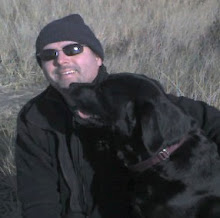Shell Vacations - Hawaii
I usually don't use my soapbox (blog) to complain, but once in a while there's something I think people should know about, and avoid.
We recently took a trip to Hawaii, and stayed in Kailua Kona. While walking the boardwalks down by the beach, you'll notice LOTS of "discounted stuff to do" vendors, who will sign you up for a timeshare presentation in exchange for discounted things like snorkel cruises, helicopter flights, etc.
One of those, is Shell Vacations Club. When we signed up for the presentation, we thought, "Hey, we'll take an hour and a half and listen to what they say and at least think about it a bit." Especially in light of the fact that right on the contract it says "If you decide not to attend, you'll pay the difference between the discounted price and the full price of your chosen activities."
So we figured we could take a slight hit if we couldn't make it.
It also says in HUGE letters right in the office, TIMESHARE NOT REQUIRED.
Well, we ran out of time, and ended up going on one lame activity (the rest of our trip was much more satisfying self-guided stuff), and when we told them we couldn't make the timeshare presentation, they proceeded to to charge us full price for the activity we did go on.
This was a doubling of the price from what the contract clearly stated. When I tried to raise the point in person, then further over the phone to get them to honor their agreement, they refused.
When I wrote to their corporate office about what happened, they've refused to respond.
So, case in point, for anyone considering going to Hawaii, either avoid these guys altogether, or at least be just fine with paying full price for your activities if you choose not to go to the presentation. Shell Vacations Club will not honor the agreement you sign with them, and it can cost you.
We recently took a trip to Hawaii, and stayed in Kailua Kona. While walking the boardwalks down by the beach, you'll notice LOTS of "discounted stuff to do" vendors, who will sign you up for a timeshare presentation in exchange for discounted things like snorkel cruises, helicopter flights, etc.
One of those, is Shell Vacations Club. When we signed up for the presentation, we thought, "Hey, we'll take an hour and a half and listen to what they say and at least think about it a bit." Especially in light of the fact that right on the contract it says "If you decide not to attend, you'll pay the difference between the discounted price and the full price of your chosen activities."
So we figured we could take a slight hit if we couldn't make it.
It also says in HUGE letters right in the office, TIMESHARE NOT REQUIRED.
Well, we ran out of time, and ended up going on one lame activity (the rest of our trip was much more satisfying self-guided stuff), and when we told them we couldn't make the timeshare presentation, they proceeded to to charge us full price for the activity we did go on.
This was a doubling of the price from what the contract clearly stated. When I tried to raise the point in person, then further over the phone to get them to honor their agreement, they refused.
When I wrote to their corporate office about what happened, they've refused to respond.
So, case in point, for anyone considering going to Hawaii, either avoid these guys altogether, or at least be just fine with paying full price for your activities if you choose not to go to the presentation. Shell Vacations Club will not honor the agreement you sign with them, and it can cost you.
Labels: avoid, Hawaii, scam, Shell Vacations Club, timeshare



